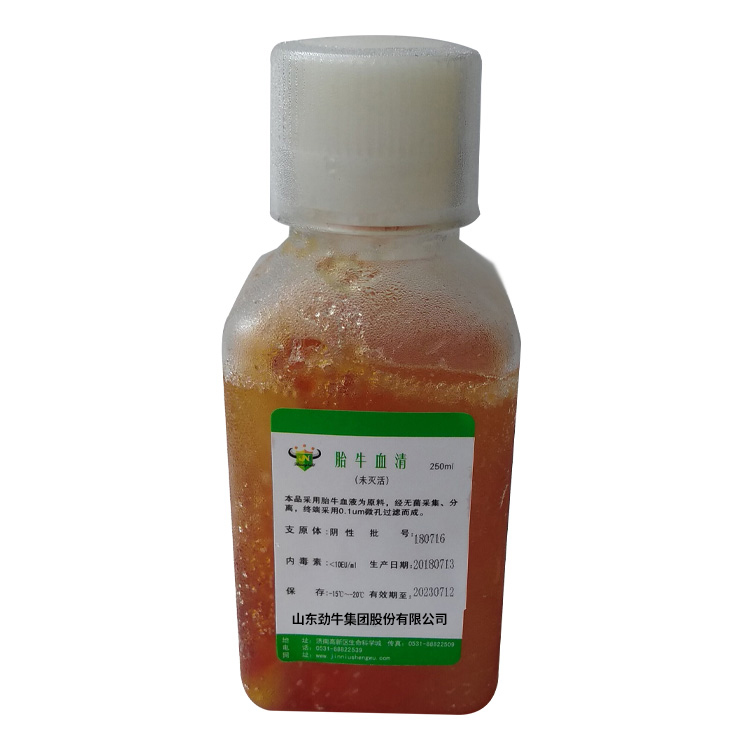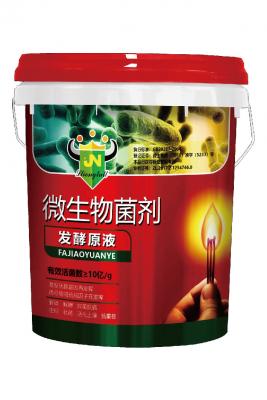Some Frequently Asked Questions About Animal Serum
In cell culture, serum is the most important component. Attention should be paid to and treatment methods in the experimental operation:
Preserving Serum: It is recommended to save Serum-5. ℃ to -2O℃. However, if stored at 4°C do not exceed one month. If one vial cannot be used at a time, it is recommended that you aseptically aliquot the serum into suitable sterilized containers and return it to the freezer.
How to thaw serum: It is recommended that you take the serum out of the refrigerator, put it in the refrigerator at 2~8°C to thaw it, and then let it thaw completely at room temperature. However, it should be noted that it must be shaken regularly and evenly during the melting process.
What should I do if flocculent precipitates appear after the serum is thawed?
There are many reasons for the sediment in the serum, but the most common reason is the denaturation of lipoproteins in the serum, and fibrin (one of the coagulation proteins) also exists in the serum after the serum is thawed, which is also one of the main reasons for the sediment . However, these flocculent precipitates do not affect the quality of the serum itself.
If you want to remove these flocculent precipitates, you can divide the serum into sterile centrifuge tubes, centrifuge a little at 400g, and the supernatant can be added to the medium and filtered together. We do not recommend filtering to remove these flocculents, as they may clog your filter membrane.
Why Heat Inactivate Serum?
Heating can inactivate the replenishment system. Activation supplements participate in cytolytic events, stimulate smooth muscle contraction, release histamine from cells and platelets, and activate lymphocytes and macrophages. Heat-inactivated serum is recommended for use in immunological studies, culturing ES cells, insect cells, and smooth muscle cells.
Is heat inactivation necessary?
Experiments have shown that properly processed heat-inactivated serum is unnecessary for most cells. Serum after such treatment can only slightly promote the growth of cells, or have no effect at all, and even the quality of serum is usually affected by high temperature treatment, resulting in a decrease in cell growth rate. However, heat-treated sera significantly increased precipitate formation. Observation of these precipitates under an inverted microscope, such as "small black spots", often makes researchers mistakenly believe that the serum is contaminated. If the serum is placed in an environment at 37°C, this precipitate will increase, making researchers mistakenly think that the serum is contaminated. It is the division and expansion of microorganisms.
So we suggest you, if it is not necessary, you don't need to do heat treatment. In this way, not only can save your precious time, but also can guarantee the quality of the serum!
Why does fetal bovine serum stored in the refrigerator precipitate?
Fetal serum is not pre-aged, and when it is stored at 2-8°C, various proteins and lipoproteins (such as clusterin, fibrinogen, vitronectin, etc.) in the serum may aggregate to form precipitates or visible turbidity. This should not affect serum quality. It is recommended to store fetal bovine serum at -20°C and avoid repeated freezing and thawing.
How to avoid sedimentation?
When thawing serum, please follow the recommended step-by-step thawing method (-20)°C to 4°C at room temperature), if the temperature changes too much when the serum is thawed (for example -20°C to 37°C), experiments show that precipitates are easy to form .
When thawing serum, please shake it well at any time to make the temperature and ingredients uniform and reduce the occurrence of precipitation.
Do not leave the serum at 37°C for too long. If it is placed at 37°C for too long, the serum will become turbid, and many unstable components in the serum will also be damaged, thereby affecting the quality of the serum.
Inactivation of blood heat can easily lead to increased sedimentation, and if it is not necessary, it is not necessary to do so.
If heat inactivation of serum is required, please follow the principle of 56°C for 30 minutes, and shake it evenly at any time. Too high temperature, too long time or uneven shaking will lead to more sediment.




